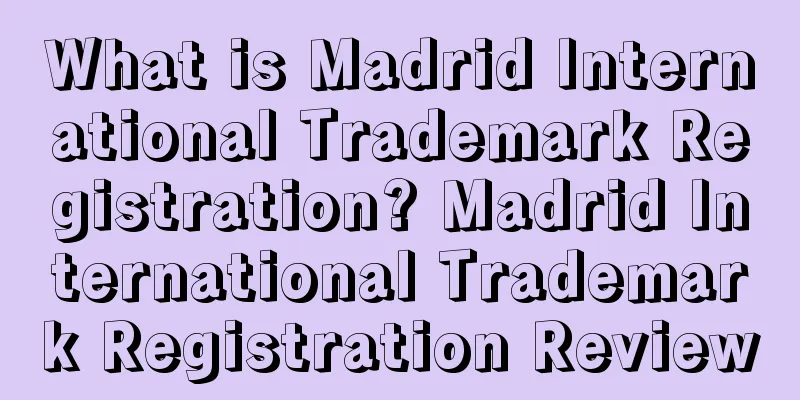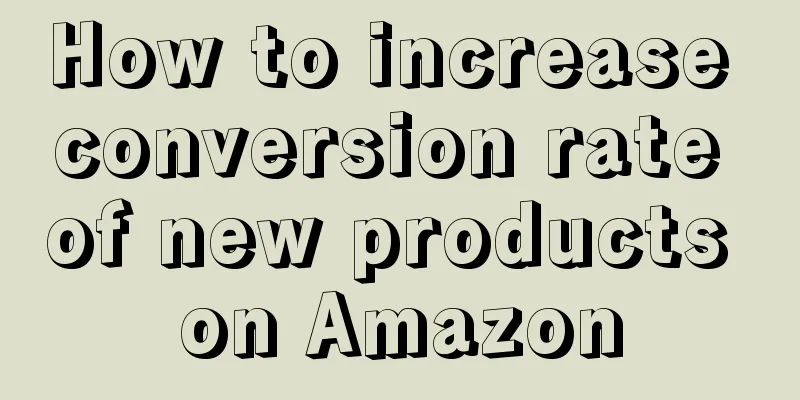2018 E-commerce Platform Summary and Trend Report: More than 1.2 million new sellers entered Amazon

|
2018 has just passed, and I hope it is not too late to review 2018 and look forward to 2019. It is learned that at the end of 2018, the e-commerce intelligence company Marketplace Pulse released the 2018 E-commerce Platform Summary Report, which conducted an in-depth analysis of major US e-commerce platforms, including Amazon, eBay, Walmart, Etsy, Wish, Facebook and Google, to help sellers and e-commerce companies review the opportunities and challenges of 2018 and look forward to 2019. The report shows that the largest online retailer in the United States is not Amazon itself, but the sellers on the Amazon platform. According to eMarketer estimates, in 2018, the e-commerce sales of millions of sellers on Amazon accounted for 31.3% of the total e-commerce sales in the United States, nearly twice that of Amazon's own sales. The specific data is shown in the figure below: In 2018, Amazon's overall sales were $175 billion, accounting for 68% of Amazon's $258 billion in total U.S. merchandise transactions. Last year, Amazon's platform sales grew 35.6%, while Amazon's own sales grew 17.5%. The second largest seller platform in the United States, eBay, had a total merchandise transaction volume of $35 billion, and Amazon's platform sales were a full five times that. Next came Etsy and Wish, with total merchandise transaction volumes of nearly $2 billion each, and finally Walmart's platform. In short, in 2018, the e-commerce industry continued to revolve around Amazon. Amazon's business in the United States and internationally continues to grow, and it is determined to become the best retailer, product developer and e-commerce platform. Amazon's rapid growth is inseparable from the support of its e-commerce platform, FBA and Prime membership system. Many products sold on Amazon come from China. Amazon's competitors tried to imitate its free two-day delivery service, but failed, and this is only one aspect. Other platforms still have a lot to learn from Amazon. At present, eBay is transforming; Walmart's platform is doing well; Jet.com is forgotten by consumers; Google and Facebook are trying to enter the e-commerce market; as for Wish and Etsy, they have found their own niches and are gradually growing. In general, Amazon's services are still far behind other e-commerce platforms for the time being, and the rise of Amazon advertising has also spawned a whole new industry, namely Amazon brand agencies. 1. Amazon Seller Funnel 2. Proportion of Amazon Chinese sellers 3. Growth trend of Amazon platform 4. Amazon FBA 5. Free two-day shipping 6. Other platforms:
7. Amazon Ecosystem 8. Amazon Advertising 9. Amazon Private Label 10. Opportunities for sellers to sell branded products on Amazon have drastically decreased The following is the specific report content: According to reports, Amazon currently has more than 2 million sellers worldwide . The scale of the platform is already well known, but the scale of the platform is not limited to the large number of sellers. There are better measurement indicators, including 20,000 sellers with sales of US$1 million or more, 140,000 sellers with sales of US$100,000 or more, and 2.5 million active sellers on the platform : As shown in the figure below, from Amazon's global seller "funnel", we can see that the top layer shows that Amazon has more than 6 million sellers, but there are only 20,000 sellers with sales of US$1 million or more. These 20,000 sellers at the bottom are the main force driving Amazon's sales growth. As shown in the figure below, among the current top sellers on Amazon, nearly 67% were top sellers one year ago, 53% were top sellers two years ago, and 41% were top sellers three years ago. The relatively low seller churn rate highlights the sellers’ long-term dependence on Amazon. In addition, the report also shows that there are more than 1 million small and medium-sized enterprises in the United States selling products on Amazon. Most of the local sellers in the United States are from California, accounting for 18% of all US sellers. They are mainly from states such as New York, Florida and Texas. Amazon US sellers in these four states account for 40% of the total. The following is the distribution map of Amazon US sellers: Based on the average data of Amazon's five European sites (Spain, Italy, France, the United Kingdom and Germany), nearly 39% of the top sellers on Amazon's European sites are from China. According to EU law, European retailers must disclose corporate business information, but the United States does not. It is understood that two years ago, the proportion of Chinese sellers on Amazon Europe was only 15%, but two years later, this figure doubled to 39%. However, the proportion of Chinese sellers on the US site is no less than 39% of that on the European site, and may even be higher. Since the US site has the highest sales, sellers are most interested in the US site. In a 2016 study, Payoneer interviewed 900 Chinese sellers and found that 62% of the respondents sold products on the Amazon platform, of which 91% sold on the US site. On December 6-7, 2018, the 4th Amazon Global Seller Summit was held in Ningbo, Zhejiang, with more than 10,000 Chinese sellers attending the summit. The number of people watching the online live broadcast was twice the actual number. In contrast, the only event held by Amazon in the United States in 2018, called "Boost with FBA", had less than 3,000 participating sellers. But the size of the event is not important, the difference in the theme of the two is worth mentioning. The US "Boost with FBA" mainly focuses on inventory management and FBA shipping suggestions, while China's Amazon Global Seller Summit is about the international expansion of sellers' businesses, product innovation and brand building. Amazon's message in China is simple: innovate in products, build its own brands, and expand global business, and the results are indeed significant. The report shows that in 2018, more than 1.2 million new sellers joined the Amazon platform, an average of about 3,459 new sellers per day, about 144 new sellers per hour, and more than 2 new sellers per minute. Most of Amazon’s new sellers mainly sell on the US, India, Germany and other sites (as shown below), but only a very small number of them will become active sellers on Amazon, and many new sellers have not even put a product on the shelves. (1) Amazon India It took Amazon 4 years to grow its India site from 0 to 200,000 sellers, but just over a year to double the number. Amazon India launched in June 2013 and took 37 months to reach its first milestone of 100,000 sellers in July 2016. It then took another 11 months to double the number of sellers to 200,000 in June 2017. Since then, the number of sellers has skyrocketed, soaring to 300,000 sellers in 8 months (until February 2018), and just 7 months later (September 2018), the number of sellers exceeded 400,000. (2) Amazon Australia Amazon’s Australian site, launched in December 2017, may not have lived up to the hype, but the company is expected to deliver on its promises over the next few years. “2018 has been a big year for Amazon Australia, but the fun is only just beginning,” said Rocco Braeuniger, Amazon’s country manager for Australia. Amazon has managed to grow its product offering from 7.5 million products at launch to nearly 100 million by the end of 2018. More than 20 million of these products are available on Amazon US, which is available through the Global Store. The growing number of sellers on the platform has driven the continued expansion of the product range. In just one year, the number of sellers on the Australian site has increased from 2,000 to 25,000. 40% of these sellers (10,000 to be exact) are from Australia, while the rest are international, mostly Chinese. Currently, Amazon Australia has provided FBA logistics services and Prime membership services to sellers and buyers respectively. Before its launch, Amazon Australia attracted 4 million to 5 million visitors per month, and the number of visits has been growing steadily since its launch. Since 2018, the traffic of Amazon Australia has doubled. According to SimilarWeb data, the number of visitors in November 2018 was the highest, reaching 16.3 million, exceeding the number of visits in December 2017, setting a record high. Currently, Amazon has more than 100 million Prime members worldwide, making the Prime membership program one of the largest loyalty programs in the world, and Prime members as a consumer group are also affecting the entire retail industry. Not only are other retailers beginning to realize that they must provide free two-day delivery services, other platforms are also looking for ways to use their own transportation methods to provide consumers with a consistent delivery experience. As shown in the figure below, the number of sellers offering Prime products to buyers has been growing steadily. In 2018, more than 90% of the top sellers now sell at least one Prime-badged product, up from 70% three years ago (2015). In addition, 73% of the top sellers sell more than half of their products that are Prime-eligible, up from 40% three years ago. Sellers choose to store their inventory in Amazon's logistics centers not just because it is more convenient or cheaper, but because shipping through FBA can open up consumer channels on Amazon. For several years, those sellers who ship with FBA have often been more successful than other sellers because of the Prime badge. Thanks to FBA delivery, Amazon Prime product range has been continuously growing. Amazon launched FBA logistics service on September 19, 2006, which allows sellers to send most of their product inventory to Amazon warehouses. Amazon will then be responsible for delivery and logistics, and Amazon will charge a certain fee. Amazon consumers who purchase products from FBA sellers will enjoy free two-day delivery service. FBA sellers will also have more advantages in competing for the "Golden Shopping Cart" (Buy Box). At present, FBA has become the cornerstone of the development of the "Amazon flywheel". The number of sellers using FBA is increasing on all Amazon sites. On February 26, 2018, Amazon Australia also launched the FBA service. In the following 10 months, the proportion of sellers using FBA on Amazon Australia increased to 33%. Sellers who use FBA to ship products have fewer products listed on average than sellers who ship products themselves. This is because listing products with FBA requires sending them to Amazon warehouses first. For example, many book sellers list hundreds of thousands of products, but rarely use FBA due to high storage costs. Amazon launched its Prime program in 2005, offering free two-day shipping on 100 million products to Prime members. Today, free two-day shipping is a mandatory requirement for all retailers. But in fact, it is difficult to truly implement free two-day delivery service. In addition to the extremely high requirements for inventory management and logistics coordination, the cost is also extremely high. Therefore, it is difficult for independent mom-and-pop shops or small retailers to implement free two-day delivery service. Walmart, the largest retailer in the United States, has nearly 5,000 stores and nearly 10 e-commerce logistics centers, but it still cannot provide free two-day delivery service. As shown in the figure below, Walmart has 2 million products that customers in the eastern coastal areas can enjoy two-day delivery service, but this number is only 1.6 million products on the west coast, a 20% reduction. In states such as Montana or Wyoming, only 1.5 million products can enjoy two-day delivery service. In 2017, Walmart offered free two-day shipping on 2 million products. But so far, that number has failed to grow. Prime is Amazon's winning weapon, and if Walmart can't offer something similar to it, then there's no point in discussing who is winning the e-commerce war between Walmart and Amazon. Walmart doesn't offer a logistics service similar to FBA, and without a similar service, it won't be able to promote the development of two-day delivery even if the platform's product range continues to grow. In September 2017, eBay launched a new feature called Guaranteed Delivery. Consumers can filter search results to show products that are guaranteed to be delivered within 3 days or less. eBay automatically opens the guaranteed delivery service to sellers with an annual transaction volume of more than 100 orders, a delayed shipment rate of no more than 5%, and an order processing time of no more than 24 hours. According to statistics, among the 800 million items on eBay US, 18 million items offer 3-day guaranteed delivery, 8 million items offer 2-day guaranteed delivery, and nearly 2 million items offer 2-day guaranteed delivery after the order is placed (1 day). Guaranteed Delivery is a new attempt for eBay. It offers the same convenience as Amazon Prime membership, but without membership fees and warehouses. As Marc Lore, president and CEO of Walmart's U.S. e-commerce market, said: "In today's e-commerce world, two-day free shipping is a platform bargaining chip." eBay wants to provide the same service, but unlike Amazon or Walmart, it wants to achieve this goal without investing in infrastructure. eBay may be right, but it is too late to offer a service that can compete with Amazon's FBA, and it may take years if it really competes with FBA. However, the proportion of products in eBay's product categories that guarantee fast shipping is relatively small. Most of eBay's tens of millions of sellers are small businesses, and they cannot provide fast shipping services across the United States without using third-party logistics.
Walmart has more than 21,000 sellers on its platform . In 2018, nearly 5,000 new sellers joined the Walmart platform. The company expects that by the end of 2018, US e-commerce sales will reach $16 billion, a year-on-year increase of 40%, mainly from platform sales, but it is not clear how much GMV the Walmart platform contributes. The following is the growth data of the number of sellers on the Walmart platform: Walmart has more than 42 million products on its platform, but Walmart sells only 3.5 million of them, with the rest coming from sellers on its platform. In just three years, Walmart has used its platform to expand its product range 10 times: from 4.5 million products in January 2015 to 42 million products in December 2018. Walmart’s own inventory increased from 1.1 million units at the beginning of 2015 to 2.6 million units in January 2017 and 3.6 million units in 2018. Meanwhile, third-party inventory grew from 3.5 million units at the beginning of 2015 to nearly 39 million units: Walmart’s self-operated marketing strategy still focuses on the first 1 million SKUs, with the rest left to platform sellers. Home goods, books, electronics, and cars & tires are the main product categories on the Walmart platform. The home category has nearly 12 million products, making it the category with the most products. In addition, as shown in the figure below, there is still a certain difference in the share of Walmart's own products in Walmart's best-selling categories: Only 3% of the electronic products sold on Walmart’s platform are from Walmart itself. In the category of jewelry and watches, Walmart itself only accounts for 2%, that is, only 60,000 of the 2.7 million jewelry and watch products are Walmart’s own. However, in some categories, such as outdoor sporting goods and toys, Walmart’s own inventory accounts for a larger proportion of the total. Walmart: One platform, two experiences However, consumers have two different experiences on the Walmart platform. The platform has expanded Walmart's product range, but it has never been integrated into the Walmart ecosystem. When buying goods from Walmart itself, users can return the goods to any Walmart. But this is not possible when buying goods from the platform. When users are not satisfied with the goods or prices, they can call Walmart, but this is not possible when buying goods on the platform. They must email the seller. Recently, Walmart launched in-store self-service terminals, which allow users to browse all products on the Walmart platform, except for those sold by platform sellers. Consumers want a platform that is simple and easy to operate. For them, platforms like Walmart, eBay or Amazon are just ordinary retail websites. They just want to buy something simply and don’t want to deal with sellers individually. This is different from Etsy, where the products of sellers on the Etsy platform are unique, and many buyers hope to establish a relationship with sellers in order to buy the products they want. Walmart now realizes this and said: "Whether it is a Walmart-owned product or a product sold by a third-party seller, we want our customers to have a consistent and easy experience." Improving the return experience is the first step. The company has said it will use the advantages of 4,700 stores across the country to make it easier to return products sold on the platform. Since Walmart acquired Jet.com in August 2016, Jet.com's traffic has increased month by month and reached a peak in the summer of 2016. But since then, Jet.com's traffic has gradually declined, as shown in the following figure: Walmart President and CEO Doug McMillon said: "We have now increased our investment in Walmart across the board and reduced marketing spending on Jet.com, which is a direct result of the decline in Jet.com traffic." Jet.com does not seem to have established a large consumer base. Doug McMillon said: "Jet.com will go through a period of adjustment. It will restart in the future, but it will focus on special markets and business opportunities. Walmart will be the foundation and an important part of the business, so we will give priority to Walmart."
89% of products sold on eBay are fixed-price products, and although eBay has transformed from an auction platform to a retail platform, people's impression of it does not seem to have changed. eBay’s GMV is growing, though not as fast as overall U.S. e-commerce retail sales. One reason eBay is often forgotten is that few brands consider it a channel. Most of the items sold on the site come from tens of millions of third-party sellers. That’s not a problem in itself, but it means few brands can relate to eBay the same way they do to other e-commerce platforms, especially Amazon. Here are the GMV figures for eBay: eBay spent years solidifying its position as the No. 2 online marketplace in the U.S. through its structured data initiative (which allows eBay to group similar listings together on a single product page, similar to Amazon’s Buy Box), guaranteed delivery services for sellers, and marketing services, but it didn’t bring anything new to the table in 2018.
Many people don't know that Google is preparing to enter the e-commerce market. For 20 years, attempts to develop shopping models have failed. So it chose to go all out and invite top sellers from Amazon, eBay and Walmart platforms to sell products on Google. In early November, Google Shopping Actions had exceeded 500 stores. Most of them were added in the past four months. Now, more than 30 new merchants are added to the platform every week. More than four years ago, there were only 30 merchants on the website. Compared with other platforms, Google's shopping platform is the most neutral. Google does not copy Amazon's FBA service like other platforms, nor does it provide consumers with product reviews like eBay. The product reviews on the platform are even moved from other websites. However, Google's platform model highlights the stores that join more than other platforms. Previously, Google's shopping site was called Google Express (also called Google Shopping Express), but it is now part of Shopping Actions. Android phone users can use Google Assistant to view products from Google merchants, or use Google Home for voice shopping. According to the survey, nearly half (46.7%) of American consumers start their product searches on Amazon, while only 34.6% of users search on Google first. Most consumers who search on Google first quickly go to websites such as Amazon and Walmart, and Google hopes to retain these users. According to Bloomberg, JD.com, China's second largest e-commerce platform, will soon launch a flagship store on Google's shopping platform.
Facebook has been studying the e-commerce market for the past 10 years, but its series of retail initiatives have mostly ended in failure. It was not until two years ago that a turnaround began. Since October 2016, Facebook has been building a classified advertising seller platform. Since the summer of 2018, Facebook has quietly expanded its platform Facebook Marketplac, including recruiting sellers. There are currently more than 150 sellers on the platform. Facebook marketplace allows consumers to buy goods without leaving Facebook.com or the Facebook App, and most of the functions are the same as other e-commerce seller platforms. Products on the platform also have ratings and reviews, users can browse by category, and the platform also has a recommendation function. At present, Facebook Marketplace is still relatively rough, users are limited to searching on the platform, and there are no reliable recommendations or management functions. For example, on the Facebook.com page, the only filter is the price range. For the rest, users can only see a long list of products. In October 2015, Amazon launched Amazon Handmade, which was hailed as the "Etsy killer". Many people speculated that Etsy might go bankrupt. As we all know, Etsy focuses on handicrafts, and the launch of Amazon Handmade undoubtedly poses a threat to Etsy. However, to this day, Amazon Handmade has continued to grow without having a significant impact on Etsy. Currently, Etsy has more than 1.2 million sellers selling more than 55 million products. Amazon Handmade has more than 16,500 sales. In one year, the number of sellers listing products on Etsy increased by 200,000, while the number on Amazon Handmade only increased by 3,000. Only 1.3% of Etsy sellers also sell products on Amazon Handmade. Although the number of product categories and the number of sellers have no direct relationship with the overall platform growth, it is undeniable that Etsy has been growing consistently. According to Etsy data, the company's gross merchandise sales (GMS) in Q2 2018 was US$901.7 million, a year-on-year increase of 20.4%. This is the fourth consecutive quarter of growth in Etsy's gross merchandise sales. However, Amazon has not yet announced the sales or growth of Amazon Handmade products. Amazon Handmade is a great sales channel for some sellers. Some sellers actually make more money than Etsy sellers. But despite Amazon’s massive web traffic and legions of Prime members, it turns out that not everything Amazon pursues is a success. Etsy is not only a platform for selling handicrafts and antiques, but also a community, which is hard for Amazon to replicate. In 2018, Etsy made progress in international markets outside the United States. Etsy CEO Josh Silverman said in the Q1 conference call that the company's international gross merchandise volume accounted for 50% of its total merchandise volume. International gross merchandise volume refers to transactions generated by sellers and buyers outside the United States. This data also held true in Q2 and Q3. Wish is a mobile e-commerce app that caters to price-sensitive users. The app sells billions of dollars worth of products each year through merchants directly to consumers (Wish does not disclose GMV). Among its growing list of sellers, 94% are Chinese. Wish has become a platform with hundreds of thousands of sellers, but because it focuses on low-priced products, convenience and high-quality products, almost all (94%) of the sellers are from China. The United States accounts for 4%, the United Kingdom accounts for 0.3%, Canada accounts for 0.2%, India accounts for 0.1%, and Australia accounts for 0.1%. The rest are distributed all over the world. Even among international sellers, many are selling goods made in China. The Wish shopping app, launched in 2011, is very popular in the United States and Europe. It is one of the most downloaded mobile shopping apps, ranking in the top 5 in terms of downloads on both iPhone and Android systems. Wish may be the only e-commerce platform in the United States that doesn't want to be like Amazon, and that's what makes it interesting. Walmart, eBay, and recently Google have all tried to imitate Amazon's strategies, such as free two-day shipping, a huge product catalog, and convenience. However, Wish focuses on customers and expectations that are completely different from other e-commerce platforms. The company's CEO Peter Szulczewski said that not all consumers want or can afford the same type of service. When Walmart and Google launch new platforms, the idea is that sellers will flock to them. But the reality is that most sellers are comfortable with Amazon and are unlikely to divert their attention to other sites. Amazon offers features that allow you to sell repeatable products, as well as other features such as new product launches, reviews, advertising, and other expertise in skills. The concept of multi-channel, selling on dozens or even hundreds of platforms, is impossible for sellers. As Amazon gets bigger and bigger, more and more consumers join Prime, and more and more sellers join FBA. Therefore, for these sellers, multi-channel is just to make their business look diversified, not their actual business strategy. Multi-channel warehousing is an open question, at least competitive with FBA prices. “It doesn’t seem very attractive to stock products outside of Amazon just to get 10% more sales than you currently sell on Amazon,” one Amazon seller said. Overall, Amazon's ecosystem does look like a castle protected by an unbreakable "moat" of sellers, while Walmart and eBay have no "moat". Because they don't have Amazon's infrastructure: Prime and FBA. Even if Amazon continues to suppress some sellers, change policies, or increase fees, the moat will only deepen as more sellers join and more consumers join Prime members. All of Amazon's services, including warehousing, logistics, international expansion, lending, advertising, etc. - are combined into a service-based platform. It continues to leverage sellers because as long as they have the cash flow to support it, the platform will help drive revenue growth. Other platforms cannot achieve the same goal because they do not have warehousing and logistics services. A good e-commerce platform is a combination of audience and service. Amazon is not only the largest e-commerce platform, but it has 100 million Prime members, plus the infrastructure it has built, which makes it even stronger. Competitive seller platforms like Walmart and eBay already have a wide audience, but the service is weak. Amazon has 14 sites around the world, including the United States, the United Kingdom, Germany, France, Canada, Japan, India, Italy, Spain, Mexico, Australia, Turkey, Brazil and China. More and more sellers are expanding into international markets. For example, American sellers open stores on Amazon Europe and Japan to attract more customers. Amazon also provides a variety of services to help sellers expand internationally. In May 2018, Amazon launched the Marketplace AppStore, which includes software tools for handling pricing, inventory, advertising and other professional sellers. Amazon's software industry has long existed, but the AppStore makes it easier for sellers to discover new tools.
In 2018, Amazon became the third largest digital advertising platform in the United States, behind Facebook and Google. Although Facebook and Google together account for more than half of the US online advertising market share, Amazon's advertising market share is growing six times faster than these two. Amazon's advertising industry deserves attention. Amazon is moving towards a marketing model that can divert traffic in all directions and attribute in-site advertising. In the past, Amazon rarely shared data with sellers and brands. But it has begun to try to cooperate with advertising companies and brands. Some experts said that Amazon will start providing data services to brands and advertising agencies. Amazon is becoming a pay-as-you-go platform. For sellers and brands, it is better to pay Amazon to ensure that they appear in the search results page than to not be able to sell products because of lack of exposure on the platform. The Internet makes any product from all over the world available on Amazon. But how do consumers find your brand? Amazon advertising is the best way. In the past few years, some brands have struggled with whether and how to advertise on Amazon, so a new industry has emerged: Amazon brand agencies. Amazon brand agents are also digital marketing consultants, marketing agencies, strategic consulting consultants, etc. They help brands create product listings, optimize brand content and keywords, and place in-site advertisements. These things used to be done by Amazon's own brands, but with the development of Amazon's automation, these own brands don't have to do it themselves. For many brands, they solve these problems on Amazon while retaining their own management rights. The biggest driver for Amazon brand agencies is advertising on Amazon. WPP is the world’s largest advertising agency (measured by revenue). In 2017, WPP’s clients spent a total of $7 billion on advertising on Facebook and Google through WPP. Facebook and Google platforms are self-service advertising platforms, which seems simple and convenient. But in fact, most companies will let experienced agencies manage in-site advertising in order to get better profits. The same is true for product advertising on Amazon, so major brands are flocking to agencies. Amazon Brand Agents are similar in many ways to resellers of the past. But the difference is that they have only one distribution channel, Amazon. This resets the retail relationship in a unique way, adding a new middleman that Amazon plans to remove. These brands are sellers on the platform and sometimes sell some inventory directly to Amazon, but are all managed by third-party sellers. In 2018, Amazon began selling a $130 private-label AmazonBasics foam mattress, with prices ranging from $129.99 for an 8-inch standard double mattress to $349.99 for a 12-inch queen mattress. The prices are consistent with the cheapest foam mattresses currently on the market. Amazon sells mattresses for three reasons:
At first, you might be surprised: Why would anyone buy a mattress on Amazon? But data shows that consumers often do. "Mattress" ranks as the 42nd most searched keyword on Amazon. It is more popular than "iphone charger," "paper towels," and even "baby wipes." Terms such as "twin mattress," "queen mattress," "memory foam mattress," and "full size mattress" are also in the top 1,000 hot search terms. Julie Creswell of The New York Times once said: "About 70% of word searches on Amazon are related to ordinary goods." Mattresses are such a product. Consumers will not specifically search for a certain brand, because there are no other well-known mattress brands except Casper. This means that the search volume and market demand for mattresses are huge, but no brand can monopolize this market. Secondly, when consumers are looking for mattresses, most of the time they will choose what they can afford, such as Zinus, Signature Sleep, Linenspa and Night Therapy products are very popular. They are all in a similar price range and compete with each other for product reviews and ratings. Zinus' best-selling mattress has more than 22,000 reviews and a product rating of 4 stars. This means that in such a business environment, any new product can be successfully launched. If the product has better reviews, a more favorable price, more competitive advertising, or is well optimized and has a high ranking on Amazon, it can occupy a place in this market. Finally, most mattresses are made by a few Chinese manufacturers. For example, one of the products Amazon just launched is made by a company in Huizhou. Some high-end brands have products with unique features, but most companies in the large market are similar products sold under different brand names. www.sleeplikethedead.com is one of the most trusted sites for unbiased ratings of sleep products. The site shows that Casper has a customer satisfaction rating of 79%, but Zinus and Signature Sleep are not far behind, each with 76%. At similar price points, the winner is the one with the lowest price. Few buyers can objectively decide based on the quality of a mattress, and therefore, no one knows which mattress is the best. Sellers and businesses need to understand the environment of Amazon shopping. Most customers search with common keywords, and if the reviews are great, it is no problem for them to buy unbranded products. Therefore, Amazon, or any brand seller, must find niche categories on the Amazon platform with similar shopping behaviors. Mattresses are one of them. For more than a decade, Amazon has been trying to get brands that don’t want to sell directly to Amazon to sell on the platform. Most brands will refuse to sell to Amazon, but some small retailers will still list these brands’ products on the platform for sale, so those brands eventually have to appear on Amazon. It is not uncommon for retailers to hide the fact that they are selling these products on Amazon, because these brands will not sell their products to retailers if they know. Some Amazon sellers even set up fake physical stores, all to tell brands that their products will be sold in stores. Over the past few years, brands have gradually realized the importance of Amazon. First, brands have tried to control Amazon's distribution by allowing only a designated list of sellers. Second, they have tried to become sellers themselves. Recently, they have started hiring Amazon agents to manage their business on the platform. For most brands, especially big brands like Apple, it is often not good to ignore Amazon's existence. Consumers are searching for Apple products on Amazon, and Apple can't stop consumers from doing that. This means a disappointing shopping experience for consumption, and since nearly half of the product searches in the United States start with Amazon, Amazon's status is even more unnecessarily unnecessarily. Last year, Amazon reached an agreement with Nike, announcing that Nike would start selling products on the Amazon platform. Similarly, Amazon and Apple also reached an agreement in 2018. The difference is that Nike is working to remove counterfeit products and improve its position on the platform. One seller pointed out that he has fewer opportunities to succeed on Amazon, and brands that have not yet partnered with Amazon are their only opportunities left. The future brands of Amazon platform will be dominated by Amazon, Amazon agencies or the brand itself. The opportunity for sellers to sell brands is decreasing. Sellers who are aware of this trend are creating their own brands, trying to introduce their own brands, and diversify internationally. The opportunities are still great, but Amazon sees brands differently and brands view Amazon. Text✎ Zhu Meiying/ Statement: When reprinting this article, the title and original text must not be modified, and the source and original link must be retained. |
>>: 10 Product Selection Tips for Amazon Sellers
Recommend
What is Notonthehighstreet? Notonthehighstreet Review
Notonthehighstreet has been called the “British Et...
"Tik Tok Recruitment" is actually a scam? Thousands of sellers were deceived by the 39,000 yuan entry fee!
▶ Video account attention cross-border navigation ...
What is Yikecao Intellectual Property? Yikecao Intellectual Property Review
Shenzhen Yikecao Intellectual Property Co., Ltd. i...
The US inventory gap is as high as 41 billion US dollars! These categories will increase prices during the "Black Friday" period!
It is learned that according to a new study by int...
Thanksgiving 2021 US online sales reached $5.1 billion! The lowest expected value!
<span data-shimo-docs="[[20,"获悉,近日,根据Adobe...
After three years of working alone, I finally found a hot product! How do you monitor the inventory and increase it at the right time? How can you prepare the stock to prevent this product from being out of stock and continue to be popular?
Anonymous user My C position Let me start with the...
What is HYPR? HYPR Review
HYPR is the world's largest and smartest influ...
Amazon's new performance indicator! Sellers are warned for product comparison pictures!
While most sellers are still focusing on price wa...
The US is about to give out a lot of money! Is Amazon making too much money causing public outrage?
Yesterday, the U.S. House of Representatives pass...
Q4 US e-commerce sales reached $285.2 billion, with growth slowing to 0.8%
It is learned that the U.S. Department of Commerce...
High inflation is holding back sales in the US this year
According to a new study, sales in the United Stat...
What is 3Dsellers? 3Dsellers Review
3Dsellers is a simple, all-in-one solution for boo...
Fakes are rampant! Etsy is accused of condoning the sale of fakes, and its stock price plummeted 8.4%
It is learned that on February 16, the founder of ...
What is Synuco? Synuco Review
Xinnuoan (Shenzhen) Technology Co., Ltd. focuses o...
What is Oudeyi Consulting Management Co., Ltd.? Oudeyi Consulting Management Co., Ltd. Review
Oudeyi is the representative office of a German ac...









